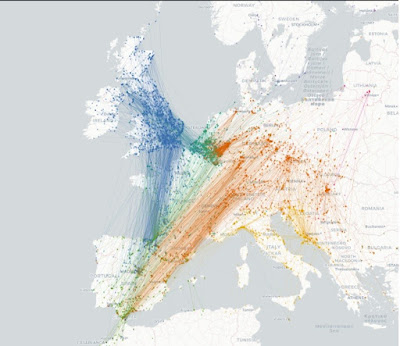Saturday 2 September with the full team out at Pilling, Will, Andy and Yours Truly. Better still, and after another breezy week, the wind had dropped and the sun shone bright for our 0630 start.
In the week I dropped additional seed and windfall apples into the varied seed plot where I thought the natural is not quite ready. A flock of more than 70 Goldfinch testified that their favourite sunflower seed needs more time but that they are well prepared by warming up on the lesser stuff.
Along the sea wall were eight Little Egrets, two Grey Heron, a couple of Pied Wagtails, a single Kestrel and 2 Wheatears. The chats avoided the steady north westerly wind and found hiding insects by ducking in and out of the sea defences.
The Saturday session came with a small mixed bag, one that once again lacked both numbers and the warbler species that are simply not around this autumn. The Experts have no evidence as yet but there is a real possibility that avian flu virus has passed in some degree to passerines via the known and now well documented death toll upon many sea bird species during 2022 and 2023.
Our catch of 14 birds comprised 3 Linnet, 2 Goldfinch, 2 Blue Tit, 2 Wren, 2 Reed Bunting, 1 Goldcrest, 1 Blackbird and 1 Sedge Warbler.
Goldcrest
Sedge Warbler
Linnet
Reed Bunting
During the morning we saw 20 or more Swallows on the move south but little else obvious in the clear blue sky save for a couple of Meadow Pipits plus a number of finches we didn’t catch.
As we packed up the ringing gear about 1100 hours Richard, Eyes-Like-The-Proverbial, drew our attention to a number of Buzzards at great height and slowly moving west.
In all we counted sixteen, yes 16 Buzzards taking advantage of thermals of the warm morning by “kettling” together, swirling and spiralling like objects being stirred or boiled in a pot.
Such a large number of Buzzards together represents an autumnal dispersal of sorts.
Some Buzzards, probably younger and less experienced individuals, move south and west from their northern strongholds into more favourable areas for the winter before returning north in the early part of the following year.
Buzzard
A few minutes later a Marsh Harrier flew west, spotted by six Ravens who drew noisy attention to the large predator in their midst. It was a good morning for raptors and where we had seen both Kestrel and two Sparrowhawks during our ringing session.
Linking today to Eileen's Saturday




























































.jpeg)



.jpg)













